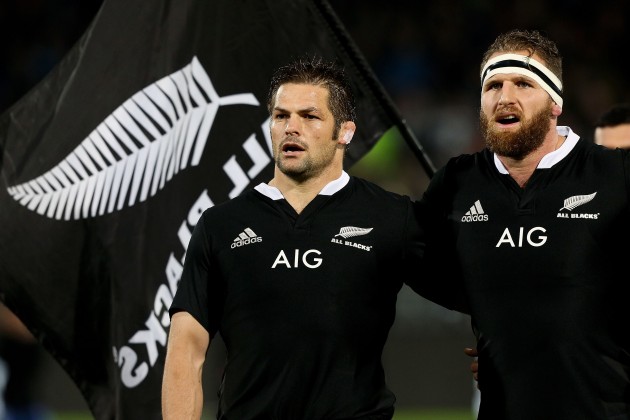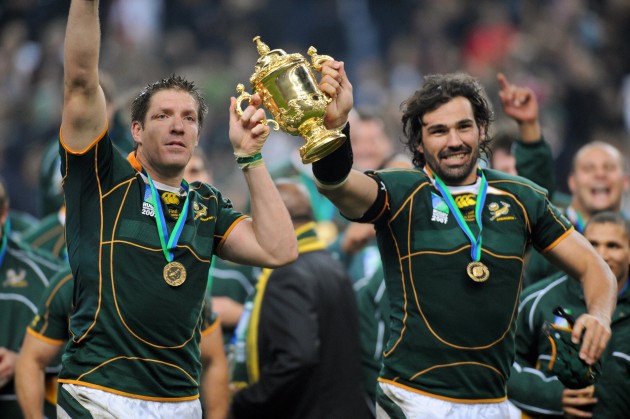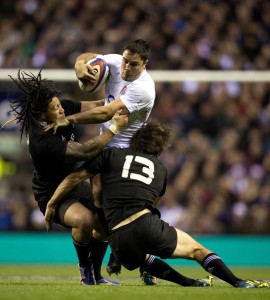England head coach Stuart Lancaster has been frequently reminded this month that time is running out to nail down a preferred side for the World Cup. The theory that experience is a key factor in winning the tournament is well established and the previous four victors each naming a side with over 600 caps is usually held up as evidence of that.
In March 2012, Lancaster stated that the rough projection for 2015 would be to have a team with a total of 663 caps. In the unlikely scenario that he could name the exact same side in the 15 Tests up until a potential final next year, he may still fail to meet that target.
Measuring experience by cap count is useful, but a five minute substitute appearance is weighted the same as a full game. As an example, Aaron Smith and Pat Lambie have a similar number of caps, 38 and 39 respectively – but the New Zealand scrum-half has racked up approximately twice as many Test minutes.
A different gauge of experience would be the number of starts made by the combinations, such as front row, centre etc. The below rugby statistics show how often the units from the last four World Cup winning XVs were started, before the tournament began.
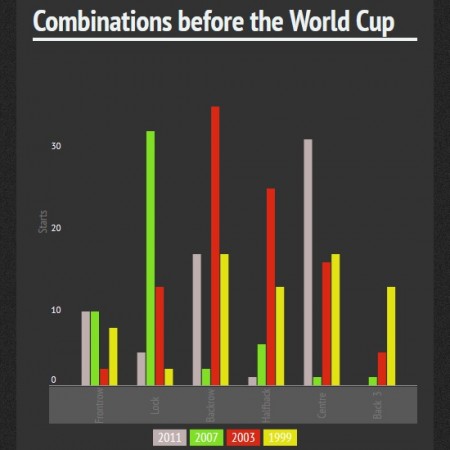 Each winner had the foundation of least one long-standing combo, such as Victor Matfield and Bakkies Botha at lock for South Africa in 2007 or the Ma’a Nonu and Conrad Smith midfield partnership for New Zealand in 2011.
Each winner had the foundation of least one long-standing combo, such as Victor Matfield and Bakkies Botha at lock for South Africa in 2007 or the Ma’a Nonu and Conrad Smith midfield partnership for New Zealand in 2011.
The smaller numbers can often be explained by injuries. The Jimmy Cowan and Dan Carter half-back pairing -24 starts or Jean de Villiers and Jaque Fourie centre duo – 13 starts, would likely have started the finals. Instead it was Piri Weepu and Aaron Cruden in 2011 and François Steyn and Fourie in 2007 – partnerships that had only appeared once before going into the competition.
How close can this current England team get to matching any of those combinations?
Below are their starting selections since 2012:
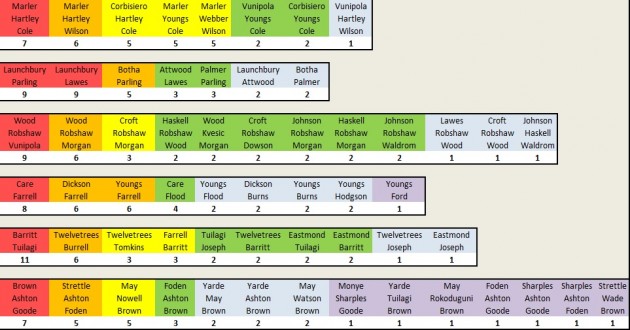 While they could better the number of front-row appearances of those previous winners, the hosts won’t have a defining unit that has made more than 20 starts by the time they play Fiji on 18 September 2015. It is also true that the majority of their most used combinations involve players that are either currently injured or haven’t been selected for recent matches.
While they could better the number of front-row appearances of those previous winners, the hosts won’t have a defining unit that has made more than 20 starts by the time they play Fiji on 18 September 2015. It is also true that the majority of their most used combinations involve players that are either currently injured or haven’t been selected for recent matches.
It is worth noting that the first time England’s 2003 winning XV all began a Test together, was against Georgia in their opening pool game of the tournament. For Australia in 1999, South Africa 2007 and New Zealand 2011, it was the semi-final stage.
However, England did field all but one of their eventual winning XV in a 25-14 win in Australia in June 2003, while South Africa selected the same number in their last warm-up game before heading to France four years later. In general, each of the previous four winners named an established spine throughout the ten matches leading into the World Cup and then rotated other players around them. England won’t have that luxury if they are still deciding on their first choice options, going into the next Six Nations.
As might be expected, the favourites to lift the World Cup next year are New Zealand. They have played nine more matches than England since the start of 2012. Allowing for that point, it can still be seen below that their selection patterns in this period are clearer.
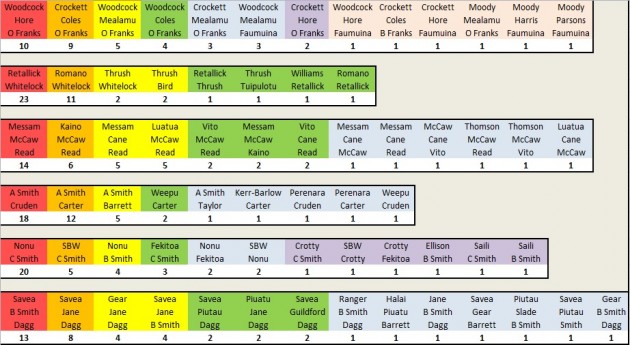 In contrast to England, the All Blacks will comfortably surpass that desired 663 cap mark barring a great number of injuries. They will also likely name a squad containing four of the last five World Rugby Player of the Year winners and a further four nominees. There should be the option to call upon front-row, back-row and centre combinations that not only possess tournament experience but have won the previous World Cup.
In contrast to England, the All Blacks will comfortably surpass that desired 663 cap mark barring a great number of injuries. They will also likely name a squad containing four of the last five World Rugby Player of the Year winners and a further four nominees. There should be the option to call upon front-row, back-row and centre combinations that not only possess tournament experience but have won the previous World Cup.
While Stuart Lancaster attempts the difficult task of building depth at the same time as maintaining continuity, he will be aware that New Zealand aren’t the only opponent with established combinations.
Saturday marked the 32nd midfield Test start for Jamie Roberts and Jonathan Davies and a 21st start for the combined trio of George North, Alex Cuthbert and Leigh Halfpenny. It was also the 19th time that the back-row unit of Dan Lydiate, Sam Warburton and Taulupe Faletau had begun a Test together.
Given there isn’t the time to match Pool A rival Wales and others in that regard, Lancaster may be required to take a shortcut and rely on existing club or previous junior level combinations. Experienced squads usually have the ‘Dad’s Army’ insult levelled at them, but this England team may be pinning their hopes on a couple of famous sons instead in George Ford and Owen Farrell.
What combinations would you like your country to pick in the World Cup? Tell us by tweeting @Rugbyworldmag or posting on our Facebook wall – Rugby World Magazine.





